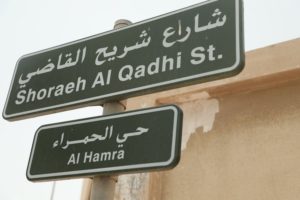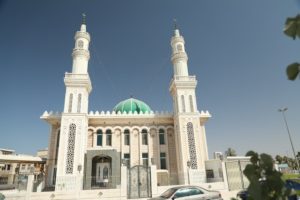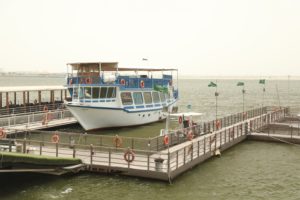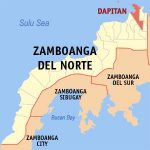Saudi Arabia used to be one of the most difficult countries to secure a tourist visa. Several years ago on a flight from Bangkok to Vietnam I remember reading an article mentioning that policies regarding travel to the country would be changing in the coming years. I made a mental note to keep an eye open for that. I was able to visit last year, spending the majority of my time in Dammam.
Traveling to Saudi Arabia can be an exhilarating adventure, with its unique blend of ancient traditions and modern innovations. The country is known for its vast deserts, vibrant cities, and rich cultural heritage; however tourism is just in its infancy. This article will provide you with essential tips and insights to make your visit to the Kingdom smooth and enjoyable.
Entry Requirements and Visa
First things first, ensure you have the appropriate visa. The introduction of the eVisa allows visitors from numerous countries to apply online. This process is straightforward and typically quick. However, always double-check the latest requirements on the official Saudi government website or consult your nearest Saudi embassy.
Best Time to Visit
Saudi Arabia’s climate is predominantly desert, with scorching summers and mild winters. And when its hot, its extremely hot; I visited in late June and the daytime temperatures in Dammam always hovered between 42 and 45 Celsius. The best time to visit is during the cooler months from October to April. During this period, temperatures are more bearable, especially for exploring outdoor attractions. Riyadh, Jeddah, and Al Ula can be particularly delightful in these months.
Respecting local customs and traditions is crucial. Public displays of affection are frowned upon, and it’s essential to be mindful of prayer times, as businesses often close briefly during these periods. My trip avoided Ramadan, the holy period that falls upon different dates each year; during this time eating and drinking in public are not allowed during daytime hours. This is something to be aware for not only travel to Saudi Arabia but also other Muslim countries.
Currency and Payments
The currency in Saudi Arabia is the Saudi Riyal (SAR). I had no problem using my U.S. issued credit cards while traveling in Dammam. However I had plenty of cash with me as well for smaller transactions like at local restaurants. ATMs are readily available; I notified my banks ahead of time of my travel plans.
Getting Around
I found transportation in Dammam challenging at times. It was hard to find public transportation and the city is so spread out. However, larger cities like Riyadh and Jeddah have well-developed public transportation systems, including buses and a metro in Riyadh. After wearing myself out by walking everywhere (especially in the heat), I discovered Uber was readily and easily available and for the rest of the trip used it to explore both Dammam and surrounding towns.
For long-distance travel, consider flying between cities. Domestic flights are frequent and relatively affordable. If you prefer a more scenic route, renting a car is a viable option. There are numerous options for this – one we absolutely do not recommend is International Drivers Association. We have talked to numerous other travelers who have had very bad experiences with this company. Saudi Arabia has an extensive road network, but remember to carry your international driving permit and familiarize yourself with local driving laws.
Dress Code and Cultural Etiquette
Saudi Arabia has a conservative dress code influenced by Islamic traditions. While the dress code has relaxed slightly for tourists, it’s important to dress modestly. Men should avoid wearing shorts in public places, and women should wear loose-fitting clothes that cover their arms and legs. An abaya (a long, black cloak) is no longer mandatory for women, but carrying one for visits to more traditional areas is advisable. I went swimming in the Persian Gulf several times and always jumped in wearing both long pants and a shirt.
Accommodation
Saudi Arabia offers a wide range of accommodation options, from luxury hotels to budget-friendly guesthouses. In major cities, you’ll find international hotel chains that provide a high standard of comfort and service. For a more authentic experience, think about staying in traditional Arabian accommodations, such as boutique hotels or desert camps.
Must-See Attractions
Saudi Arabia offers a plethora of attractions catering to diversity of interests. Here are some must-see spots:
Riyadh: The capital city is a fascinating blend of the old and new. Visit the historical Al Masmak Fortress, explore the National Museum, and marvel at the modern Kingdom Centre Tower, where you can enjoy panoramic views of the city.
Jeddah: Known as the gateway to Mecca, Jeddah is famous for its Red Sea coastline. Stroll along the Jeddah Corniche, dive into the rich marine life, and explore the historic Al-Balad district with its traditional coral houses.
Al Ula: This hidden gem is home to the UNESCO World Heritage site of Hegra (Madain Saleh). Discover ancient tombs carved into sandstone mountains, and don’t miss the breathtaking Elephant Rock.
Cuisine
Saudi Arabian cuisine is a blend of flavors and traditions. Don’t miss out on trying Kabsa, a spiced rice dish with meat, or Mandi, a fragrant rice and meat dish cooked in an underground oven. For a sweet treat, indulge in Baklava or Ma’amoul; I found plenty of bakeries in Dammam. Traditional coffee (Gahwa) and dates are a quintessential part of Saudi hospitality. I discovered only a few international restaurants during my stay in Dammam.
Safety and Health
My time in Saudi Arabia felt and was extremely safe and safety was the least of my concerns. Healthcare facilities are of high quality in major cities, but it’s always advisable to have travel insurance that covers medical expenses.
Final Tips
Language: Arabic is the official language, but English is widely understood in tourist areas and by younger generations. Most of my communication was with younger Uber drivers; for some reason they never initiated conversation but once I did so, they opened up.
Electricity: The standard voltage is 230V, and the plug type is G. Carry an adapter if your devices have a different plug type.
Water: Tap water is safe to use for washing, but it’s recommended to drink bottled water.
With its rich history, diverse landscapes, and welcoming people, Saudi Arabia is a destination that promises a memorable journey. And it is a country that is interested in building tourism. It is the only country where post trip, I received a survey directly from the government asking numerous questions about my time in the country, with requests for how to improve their tourism.
Safe travels!











One of the most enriching aspects of travel is the exposure to diverse cultures. When visiting a foreign country, people gain insight into traditions and beliefs that have been shaped by centuries of history. Experiencing a traditional tea ceremony in Japan, for instance, offers a glimpse into the art of mindfulness and respect. Similarly, witnessing a festival in India, with its vibrant colors and rich symbolism, is an immersion into a culture that celebrates life in all its forms. These moments create lasting impressions, fostering a sense of empathy and respect for the diversity of human experience. Through these encounters, travelers often come to realize the similarities that bind people together, transcending cultural and linguistic barriers.
Hello Dave, thanks for sharing this info on Saudi Arabia. Do you have any more information about Al Ula? As in is it possible to rent a car and visit all the sights, carvings etc without a purchased tour? We are travelling at the end of December and looking for adventure outside of Jeddah.
Thanks.